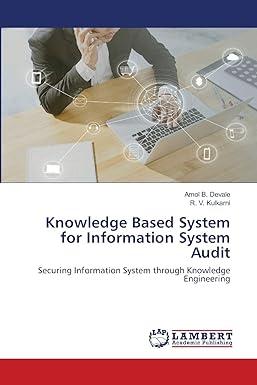Answered step by step
Verified Expert Solution
Question
1 Approved Answer
5- Part 2 of the AICPA code of professional conduct is applicable to: A- A11 members B-Members in public practice. C-Members in business D- Other

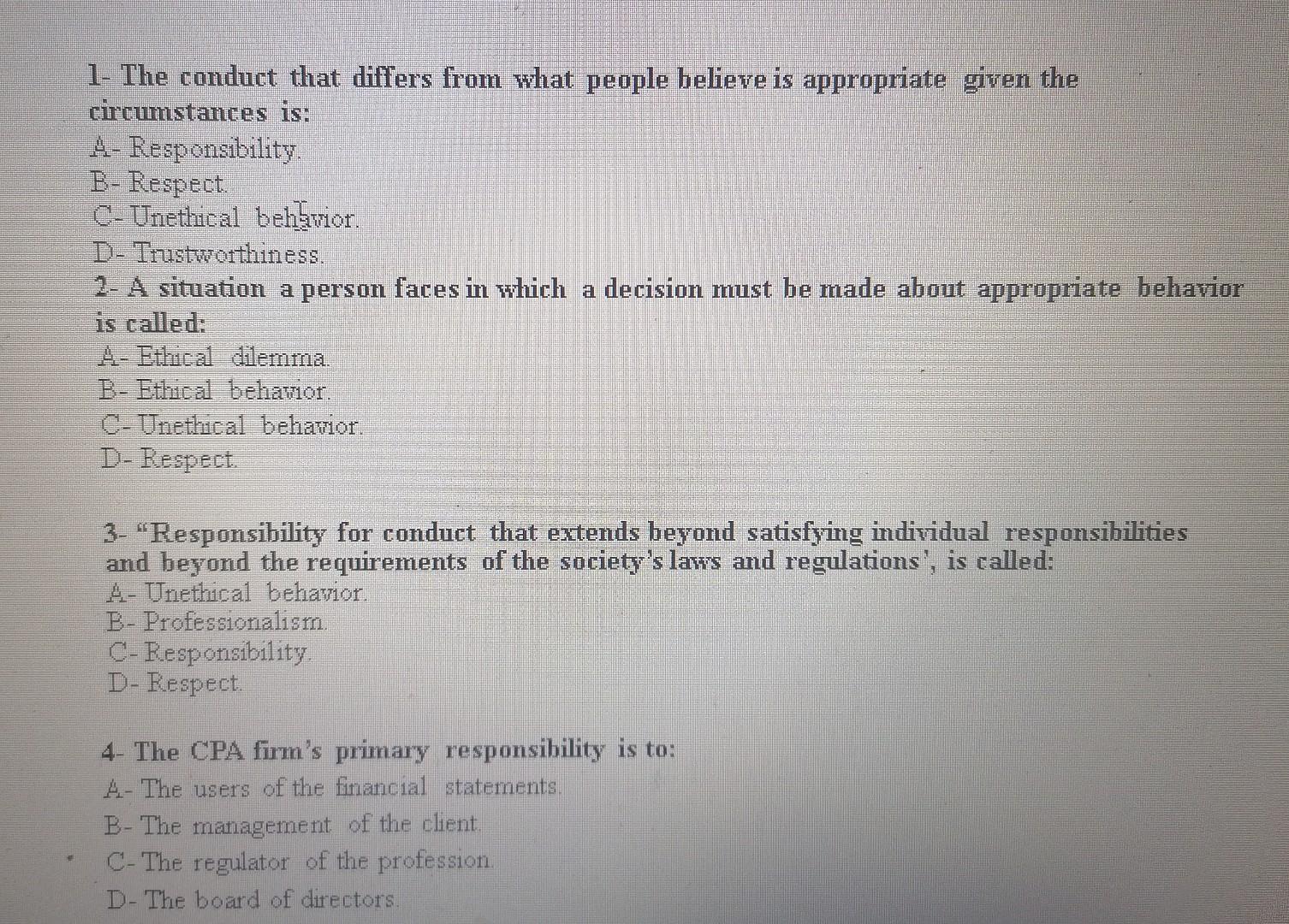
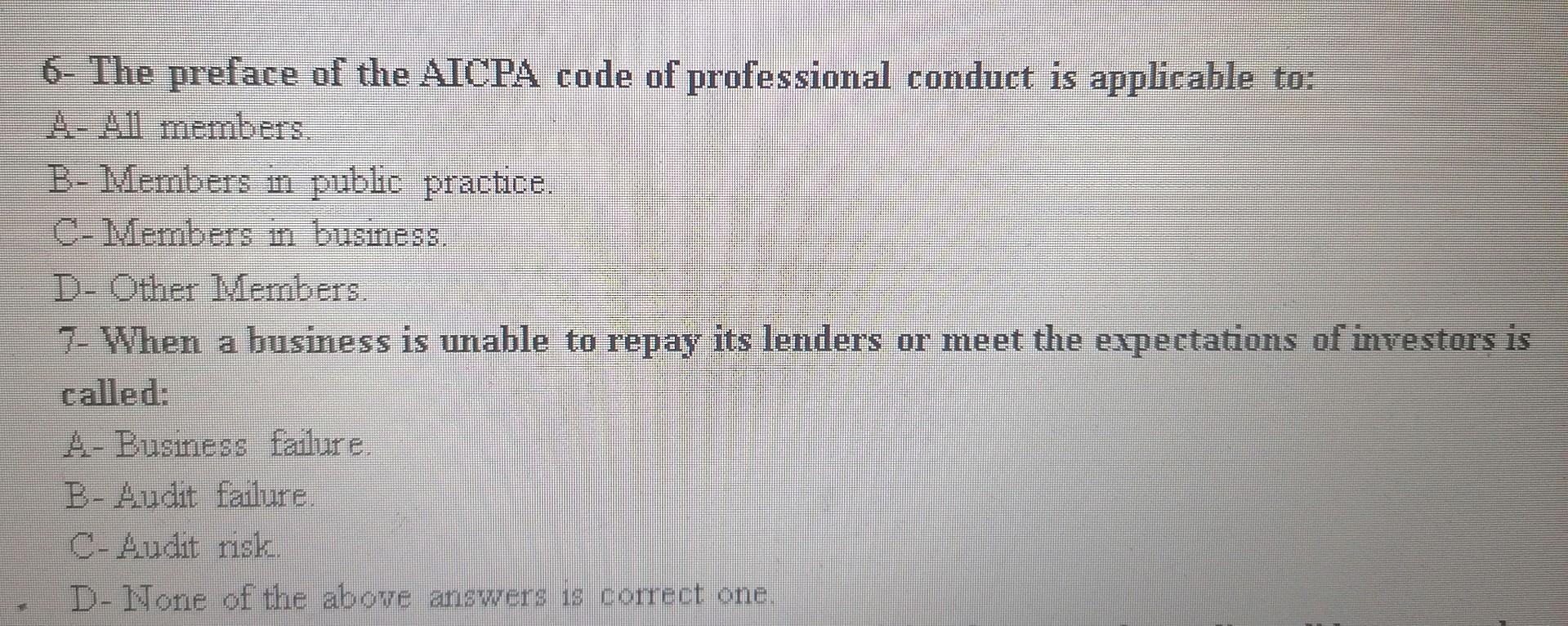
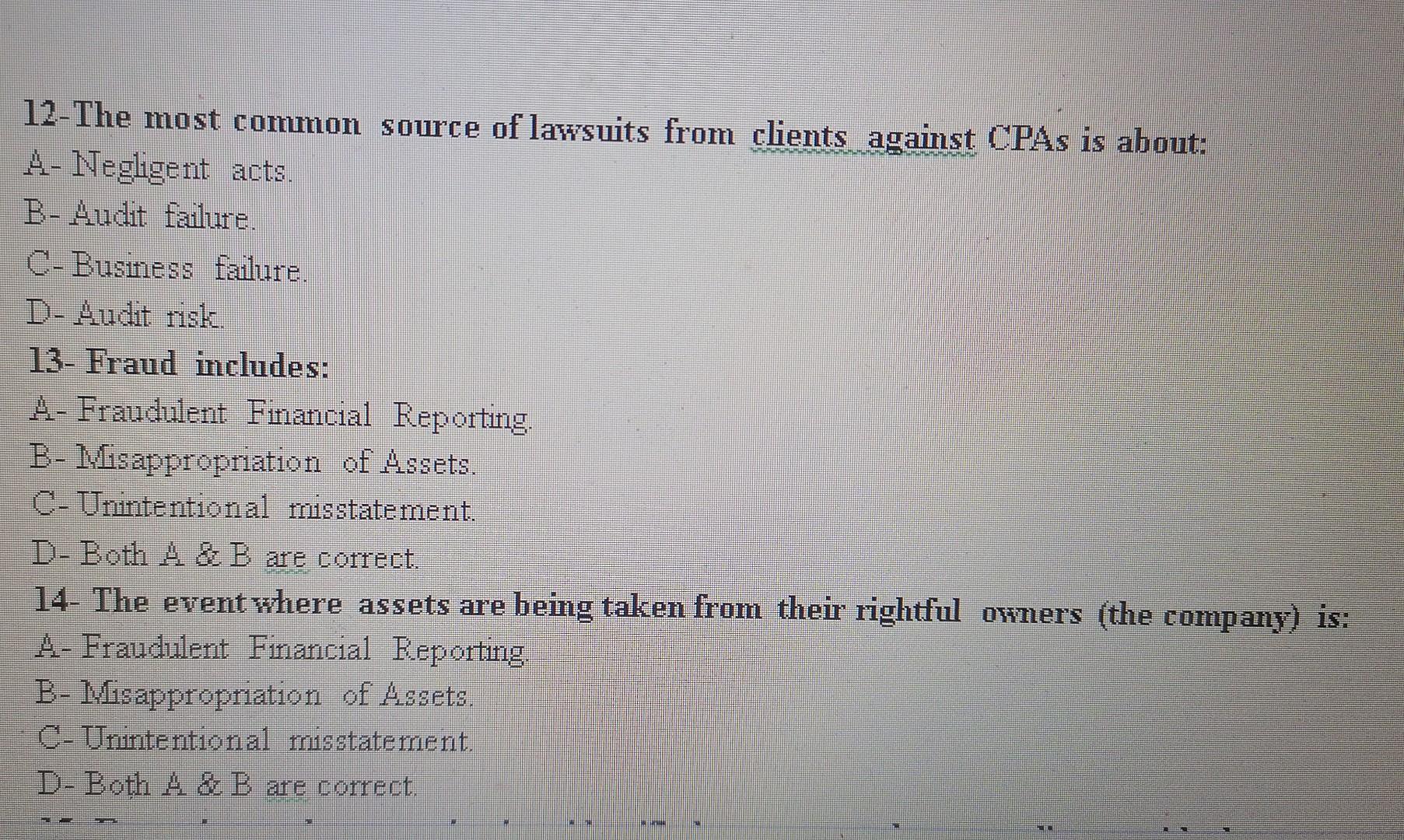
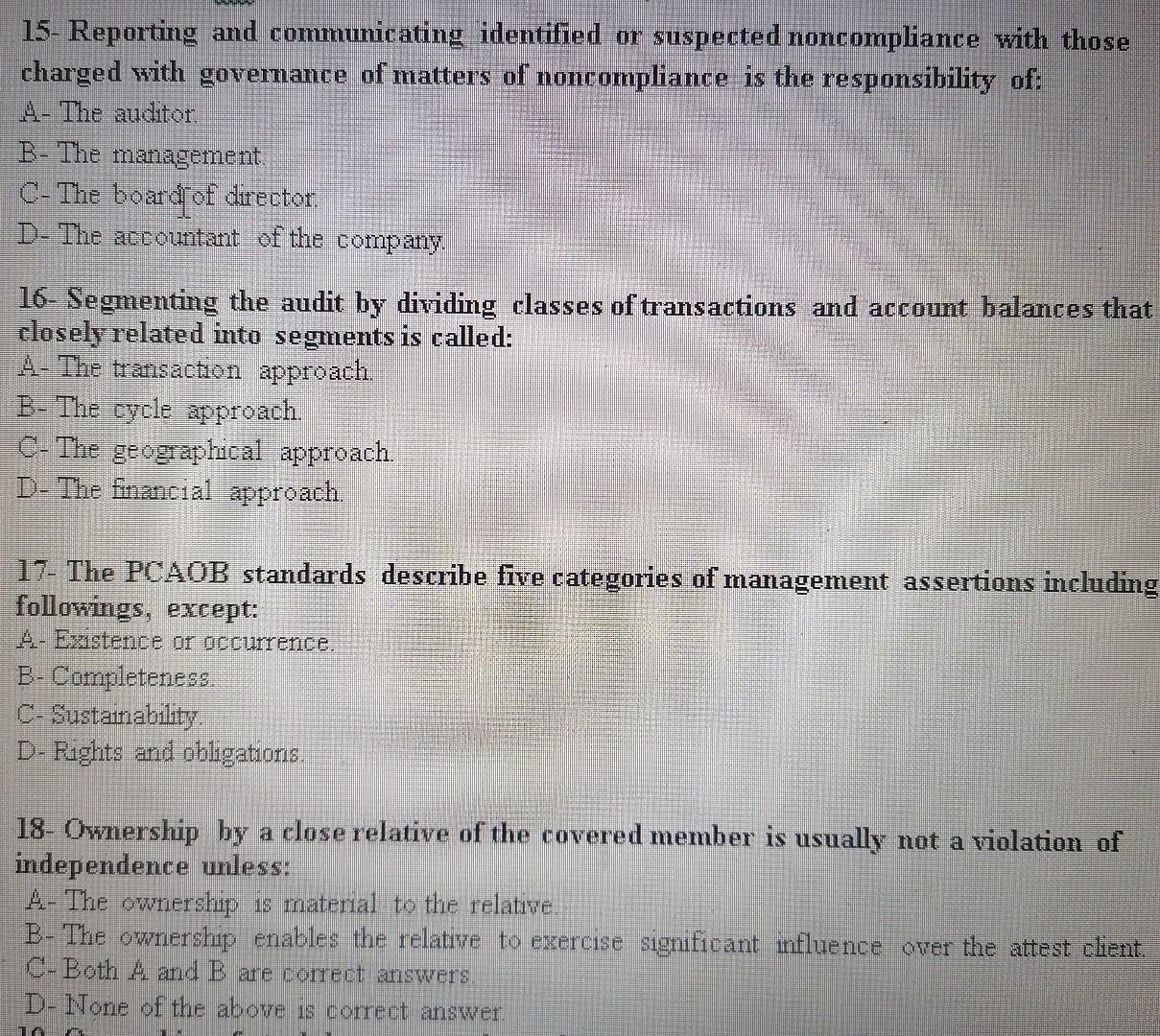
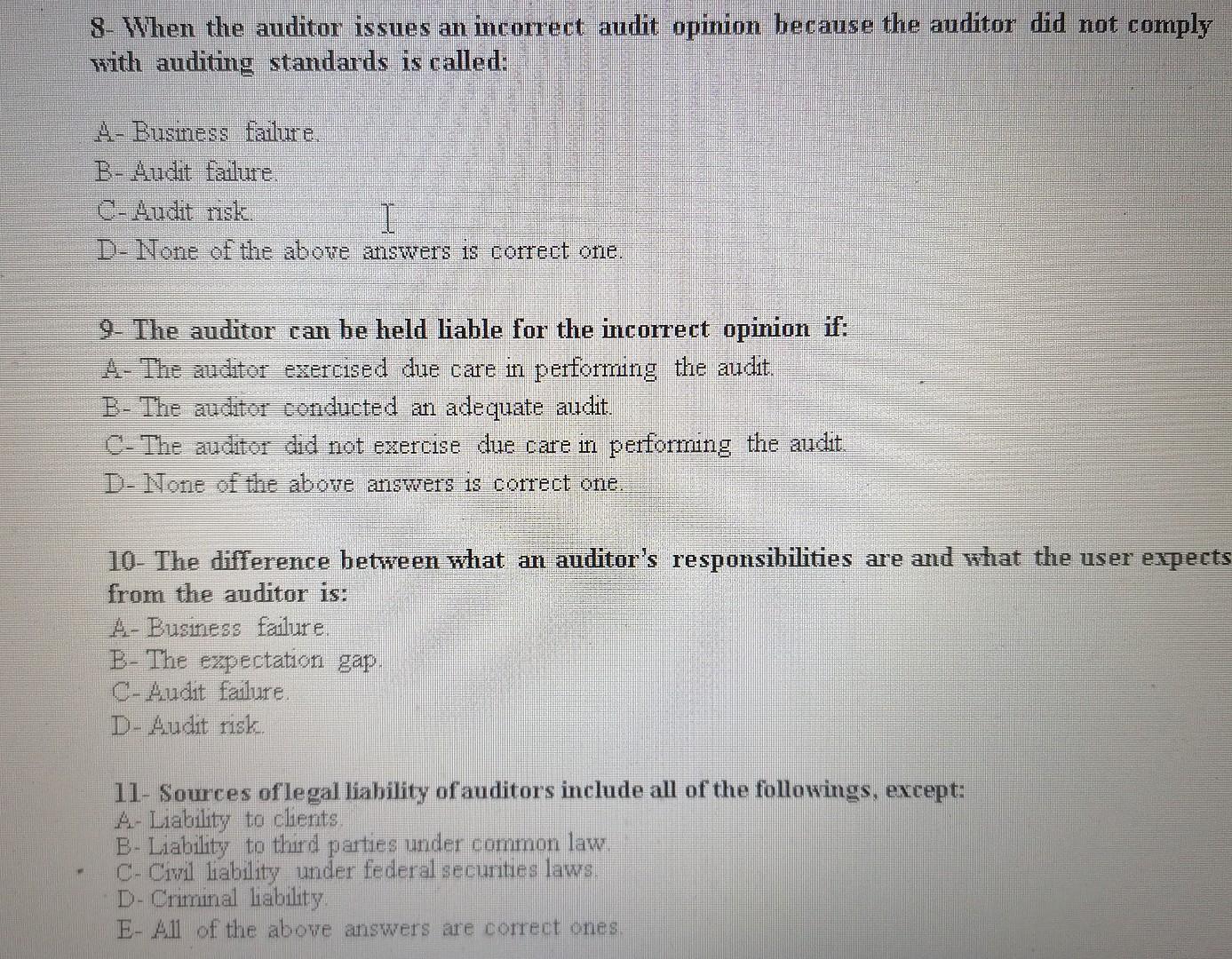
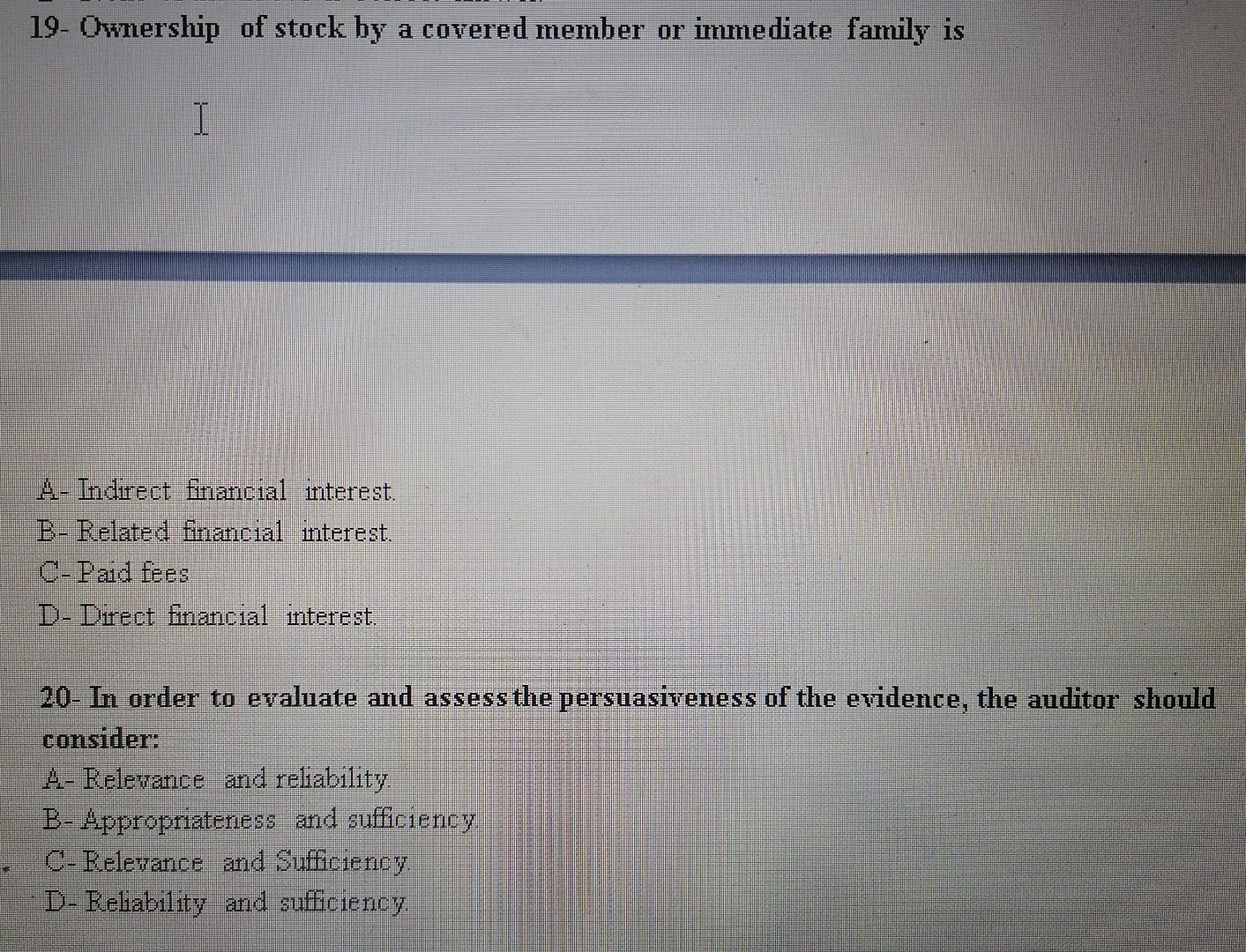
5- Part 2 of the AICPA code of professional conduct is applicable to: A- A11 members B-Members in public practice. C-Members in business D- Other Members 1- The conduct that differs from what people believe is appropriate given the circumstances is: A- Responsibility B-Respect C- Unethical behavior. D- Trustworthiness. 2- A situation a person faces in which a decision must be made about appropriate behavior is called: 4- Ethical dilemma. B- Ethical behavior. C-Unethical behavior. D- Respect. 3- "Responsibility for conduct that extends beyond satisfying individual responsibilities and beyond the requirements of the society's laws and regulations', is called: A- Unethical behavior. B- Professionalism. C- Responsibility D- Respect 4- The CPA firm's primary responsibility is to: A- The users of the financial statements. B- The management of the client. C-The regulator of the profession. D- The board of directors. 6- The preface of the AICPA code of professional conduct is applicable to: - 41 members B- Members in public practice. e Members in business, D- Other Members 7. When a business is unable to repay its lenders or meet the expectations of investors is called: 4- Business failure. B- Audit failure C-Audit risk. D-None of the above answers 18 correct one. 12-The most common source of lawsuits from clients against CPAs is about: A- Negligent acts. B- Audit failure. C-Business failure. D- Audit risk. 13- Fraud includes: A- Fraudulent Financial Reporting, B- Misappropriation of Assets. C-Unintentional misstatement. D- Both A & B are correct. 14- The event where assets are being taken frem their rightful owners (the company) is: A- Fraudulent Financial Reporting, B- Misappropriation of Assets. C-Unintentional misstatement. D- Both 4. & B are correct. 15- Reporting and communicating identified or suspected noncompliance with those charged with governance of matters of noncompliance is the responsibility of: A- The auditor B- The management. C- The boardrof director. D- The accountant of the company. 16- Segmenting the audit by dividing classes of transactions and account balances that closely related into segments is called: 4- The transaction approach. B- The cycle approach. C- The geographical approach. D- The financial approach. 17- The PCAOB standards describe five categories of management assertions including followings, except: A - Existence or occurrence. B- Completeness C-Sustainability D- Rights and obligationis. 18- Ownership by a close relative of the covered member is usually not a violation of independence unless: A- The ownership is material to the relative. B- The ownership enables the relative to exercise significant influence over the attest client C-Both A and B are correct answers. D-None of the above is correct answer. 8. When the auditor issues an incorrect audit opinion because the auditor did not comply with auditing standards is called: 1- Busmess failure. B-Audit failure. C - Audit risk I D- None of the above answers is correct one. 9- The auditor can be held liable for the incorrect opinion if: 4- The auditor exercised due care in performing the audit. B- The auditor conducted an adequate audit. C- The auditor did not exercise due care in performing the audit. D. None of the above answers is correct one. 10- The difference between what an auditor's responsibilities are and what the user expects from the auditor is: A- Business failure. B- The ezpectation gap. C-Audit failure. D- Audit risk. 11- Sources of legal liability ofauditors include all of the followings, except: A- Liability to clients, B- Liability to third parties under common law. C- Civil liability under federal securities laws. D- Criminal liability E- All of the above answers are correct ones 19. Ownership of stock by a covered member or immediate family is I A- Indirect financial interest. B- Related financial interest. C-Paid fees D- Direct financial interest. 20- In order to evaluate and assess the persuasiveness of the evidence, the auditor should consider: 4- Relevance and reliability. B- Appropriateness and sufficiency C-Relevance and Sufficiency. D- Reliability and sufficiency
Step by Step Solution
There are 3 Steps involved in it
Step: 1

Get Instant Access to Expert-Tailored Solutions
See step-by-step solutions with expert insights and AI powered tools for academic success
Step: 2

Step: 3

Ace Your Homework with AI
Get the answers you need in no time with our AI-driven, step-by-step assistance
Get Started


